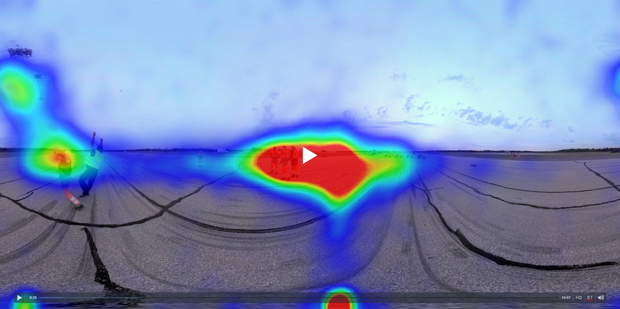ARTE, the Franco-German arts and culture TV network, started its journey in the world of virtual reality three years ago when it planned a documentary on climate change.
To bring the effects of climate change closer to an audience that may not have had direct contact with these issues, ARTE decided to produce a documentary using 360-degree video.
Around the same time, the crowdfunding campaign for the Oculus Rift had just started – prompting the team to consider taking the documentary to Oculus as well as the ARTE360 app, which was in development back then.
"In 2013-14 we were a bit like in the beginning of black and white movies, the first movies coming to theatre," said Kay Meseberg, head of VR and 360 at ARTE, speaking to Journalism.co.uk at the News Impact Summit in Berlin on 1 July.
"The videos we did were really short, it was a proof of concept that it works and that people are interested in it.
"Then, step by step, we did more sophisticated and longer productions with the goal to be available in the multiplatform way, not only to do it for one device but to do it for really all kinds of vectors which are accessible – so websites, the app, social media, and the head-mounted displays."
ARTE partnered up with Canadian production company Deep Inc. to create a chain that links every process in the creation of a 360-degree video, from the first idea to publication, as well as to monitor viewers' interactions with the experience.
"It helps a lot to dig deeper into the videos and to see, okay, people are following or they aren't, they use the sphere or they don't, and how they do it on the different vectors. So we can analyse that on all our platforms."
ARTE creates a heatmap for all the videos inside the ARTE360 app, to monitor where people are looking and whether they use the full 360-degrees of the videos or focus on specific sections. The data is handled anonymously.

Meseberg explained the heatmap for each video is different, with viewers behaving in contrasting ways.
When watching the "Exploring Mont Blanc" experience, for example, viewers do not tend to use the full 360-degrees footage at first, because the landscape that opens up the film is breathtaking as a traditional video.
But viewers of "The Edge of Space", an experience that takes people 42 kilometres above ground in a balloon, tend to focus on specific scenes and moving objects within the sphere, which Meseberg considers key to understanding the story.
The 360-degree video team at ARTE is using these insights to create editing features and tools for the production process.
"We developed tools such as effects where you have forced perspective, for instance. To understand the story, it's sometimes crucial to see one part of the sphere, otherwise you really wouldn't get it.
"So we do an edit which brings this part of the sphere just in front of the face of the viewer so that he or she can understand the story much better."
The use of text inside 360-degree videos has been a challenging matter for publishers experimenting with the format, as it can be difficult to predict where the viewer will be looking at any given time and whether they will find the annotations if they are attached to a particular frame in the video.
Meseberg explained ARTE has begun using gaze control, which means the titles and text inside the 360-degree videos are independent from the footage and appear in front of the viewer's eyes no matter where inside the sphere they are looking.
The only ARTE video using gaze control so far is The Edge of Space. "That's something which helps a lot to make it more elegant as well."
But does Meseberg think people will be keen to watch and adopt 360-degree video, or are we just seeing another spike of interest towards virtual reality that will eventually die down?
"With the smartphone, it's really the chance that this will be something with longer life than all the other virtual reality moments," he said.
**Update: **The story has been updated to clarify the data that makes up the heatmaps is gathered anonymously.
Free daily newsletter
If you like our news and feature articles, you can sign up to receive our free daily (Mon-Fri) email newsletter (mobile friendly).
Related articles
- Advertorial: Improving strategic content planning in your newsroom
- Behind the scenes of A/B testing: benchmarks and insights from three digital publishers
- 12 replies to common objections to using data in the newsroom
- Have you got audience data? Good. Now use it
- Take part in the Journalism.co.uk readership survey










